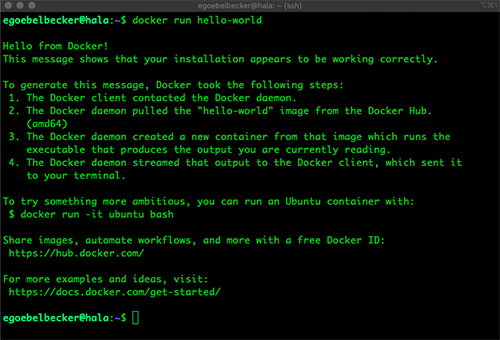

So you can create your list of containers within this to be passed to the stop and rm commands. The shell syntax $() returns the results of whatever is executed within the brackets. You can stop and delete multiple containers by passing the commands a list of the containers you want to remove. When you run this command, you’ll notice that you were not returned to the command prompt. Execute the following command in your terminal. Let’s start our image and make sure it is running correctly. Delete all stopped containers: docker rm $(docker ps -a -q) The docker run command requires one parameter and that is the image name.Stop all running containers: docker stop $(docker ps -a -q).When you have Docker containers running, you first need to stop them before deleting them. For More Information:ĭocker rm removes containers by their name or ID. So in this -q- is a option is used to provide to return the unique IDs,$() returns the results of image IDs and then docker rmi removes all those images. Here in the above command, there are two command the first which execute in the $() is shell syntax and returns the results whatever executed in that syntax. To remove all images there is a simple command to do that. You may use the container IDs one by one but that will be too time-consuming. q option only displays the container ID. a option displays all running and stopped containers.

docker ps -a -q -filter ancestordockerimagename. So running docker rmi us.gcr.io/deployhub-v81/dh-ms-ui:latest deletes that image/tag combo. I originally was looking for an option under Docker tag since that is the way you add the image to a repository. Write Images IDs in the command followed by the spaces between them. First, you need to find all containers associated with an image name (not ID). To fix a duplicate Docker image ID you need to first delete one of them. So to do that first get Image IDs simply by listing the images then execute simple followed command. There is a way to remove more than one images at a time, when you want to remove multiple specific images. Then you can confirm that image has been removed or not by list all the images and check. By running simple command docker images -a or docker images.Īfter that you make sure which image want to remove, to do that executing this simple command docker rmi. To remove the image, you first need to list all the images to get the Image IDs, Image name and other details.


 0 kommentar(er)
0 kommentar(er)
